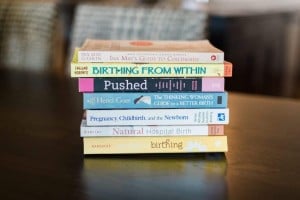One of the biggest questions for first-time expecting moms is what contractions feel like. What can you expect, and how bad will labor genuinely be?
The answer? Honestly, as with so many things baby-related, it depends! But you should know a few general things about labor that can help you prepare for the big day. Here are a few tips and insights on what you need to know about contractions and labor pain.
What Do Contractions and Labor Pain Feel Like?
During a labor contraction, your uterus is — well, contracting! You may see your belly physically tighten and move as your uterine muscles contract and start the process of pushing your baby down.
So, what does it feel like? Labor contractions, particularly in the earlier stages of labor, can feel like very heavy period cramps. You’ll typically feel waves of pain in your lower abdomen, lower back, or throughout your abdomen. As labor progresses, the contractions will become longer and stronger, so they’ll likely take your breath away, make it difficult to talk, or make walking or moving around challenging.
Some moms also experience back labor, where the pain is more focused in the lower back.1 Your baby’s position typically causes back labor and can be a bit more painful since the pain may continue even in between contractions.
What Are the Different Stages of Labor?
You can expect contractions to intensify as you go through each stage of labor.2 So, what exactly are the different labor stages?
First up is early labor. In this stage, your cervix is starting to dilate and thin out or efface. Early labor can last for days or hours, so it’s hard to gauge how you feel throughout. Generally, contractions will be mild during very early labor, and you may experience more of an ache or pain similar to menstrual cramps. As early labor progresses, the contractions should become more regular, much stronger than typical cramps, and painful in your back and the front of your belly.
The next stage, active labor, is when things start to feel very real. The pain intensifies, and your contractions should become more prolonged and more regular — happening every 5 minutes or less — each lasting for a minute or more. This is the stage when things really get moving, and your cervix is dilating from 6 cm to 10 cm.2
The last portion of active labor – transition – is what many women will describe as the most intense part of labor. Contractions are very close together. They can feel like they are constantly rolling from one to the next without much of a break. Thankfully, transition labor is a relatively short phase, typically lasting 15 minutes to an hour.2
What’s the Best Way To Cope 3ith Labor Pains?
Some effective tips for managing labor pain, particularly during active labor. Changing positions (early labor positions, transition labor positions, active labor positions), using breathing techniques, or getting in the shower or bath are just some options.
Whether you want an unmedicated birth – or even if you don’t – it’s great to research different methods for coping with the pain beforehand. If you opt to go with medication, an epidural is the most common method of pain relief used during childbirth.3
After a 30+ hour labor with my first baby and a very early epidural that didn’t work well, I knew I wanted to wait as long as possible the second time. With baby #2, I waited until my contractions were intense – about 4 minutes apart – before going to the hospital. This helped me labor at home as I wanted and avoid getting an epidural “too early” (for me!) since the option wasn’t available at home.
How Do You Know When You’re Actually in Labor?
Now you know how contractions will most likely feel. But if you are a first-time mom, especially if you’ve been experiencing Braxton Hicks contractions, you may still be a little nervous about how you’ll know you are in labor.
Braxton Hicks contractions can fool new moms into thinking they’re in labor. But there are a few key distinctions from real labor contractions. Braxton Hicks tends to be irregular, varying in intensity level, and may happen for a few hours one day and then stop for a day or two. They also tend to be more uncomfortable than painful. The last point is subjective because we all have different pain tolerance levels.
The length and consistency of your contractions can also help you determine when the labor pains are real. Your doctor or midwife will usually give you a guideline for when to call them based on the timing of your contractions. Always confirm with them, but the general rule given for when to head to the hospital – or to at least know that labor is here – is when you reach 5-1-1. This means your contractions are 5 minutes apart, each lasting for 1 minute, and this is a regular pattern over 1 hour.
In the end, don’t worry too much! When labor progresses to the point where you really need to be at the hospital, birth center, or even at home prepping for your baby, the pain will be pretty intense, and you will know. And the ultimate reminder? At the end of this crazy experience, you’ll finally have your baby in your arms. The pain will (hopefully!) be a distant memory.












